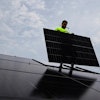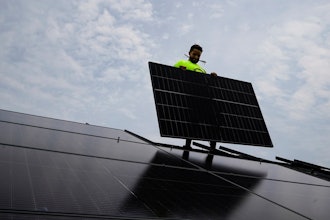When I was in college I went through a phase of obsessive interest in Chernobyl and pored over books examining the human and environmental toll of the disaster. One of my favorite reads, “Wormwood Forest: A Natural History of Chernobyl” painted a startling portrait of the landscape left behind after the Chernobyl zone was evacuated.
Rather than two-headed deer trotting through the trees or mutant fish swimming in streams, the forested evacuated areas in Ukraine and Belarus it seemed were teeming with wildlife. In the absence of people, wolves, deer and elk were thriving merrily in the radioactive woods and growing in numbers.
That was about 20 years after the 1986 meltdown at the Chernobyl Nuclear Power Plant in Ukraine, which immediately killed dozens and unleashed potentially cancerous radiation upon tens of thousands.
Now, it’s been about 30 years since the disaster, and the area is still a scientist’s playground, where nature provides the perfect lab to study the effects of radiation on the environment.
How are the animals getting along? Still mostly better, with all the humans gone.
A new study published in the journal Current Biology, showed that elk, deer, wolves and wild boar are living in abundant numbers in the Polesie reserve in Belarus, which was founded after the disaster and used to be home to about 20,000 people.
After tracking these animals, the researchers determined that their population was similar to other nearby nature reserves and in the case of wolves, the population in the contaminated area is even seven times higher.
The answer to how these animals have maintained a steady or growing population despite the nuclear leftovers boils down to this: Humans are worse for animals than radiation. In the absence of hunters, cars, new developments, etc., it seems that nature wins.
"We're not saying radiation is good for animals, but we are saying that human interference can be more harmful to certain animal populations than radiation," said Jim Smith, an environmental scientist at Britain's University of Portsmouth who led the study.
Take for example, the history of the Przewalski horse. Once on the brink of extinction, the numbers of Przewalski horses had begun to swell after conservationists released several dozen of the horses into the evacuated zone around Chernobyl. Years later, there were around 200 of the horses in the zone — until poachers recently reduced their population to around 60. So, nature was winning, until we returned.
But before we grab on too tightly to the idea that humans are worse than radioactivity, other scientists have pointed out that when it comes to smaller creatures — insects, small mammals, etc. — radiation has taken a massive toll.
"There is no evidence to suggest this area is teeming with wildlife," said biologist Timothy Mousseau at the University of South Carolina.
According to an AP story on the new study: “The mammals in [the] research are constantly dispersing and have high fertility rates, factors that could also explain a robust population of certain mammal species in the Polesie nature reserve.”
This New York Times video from last year also follows a scientist in the evacuated zone who has tracked tumors in birds and shows how many birds succumbed before the remaining of their species managing to adapt and survive.
Bottom line? If there’s a nuclear meltdown, it’s better to be a wolf than a bug. Although we might be back in 10 years and find out that some small species have adapted and returned — that is, of course, unless too many humans return there first.






















